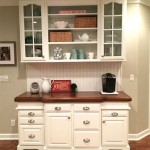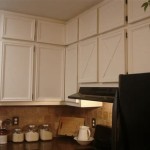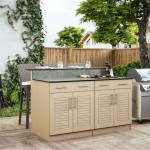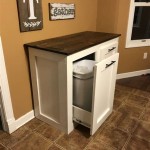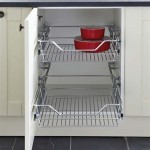Should I Put Handles On My Kitchen Cabinets?
Kitchen cabinets are a central element of any kitchen, and their design plays a significant role in the overall aesthetic and functionality of the space. One common design choice that homeowners ponder is whether to install handles on their cabinets. While handles are traditional, some homeowners opt for handleless cabinets, embracing a sleek, minimalist look. This decision hinges on a combination of factors, including personal preference, kitchen design, and practical considerations.
Aesthetics: Handleless vs. Handles
The aesthetic impact of handles on kitchen cabinets is arguably the most prominent factor in this decision. Handleless cabinets, also known as "push to open" cabinets, offer a sleek, contemporary look, creating a clean and uncluttered appearance. They are especially well-suited to modern minimalist kitchens, where clean lines and a streamlined aesthetic are prioritized. Conversely, handles add a decorative element to cabinets, providing a visual focal point that can enhance the overall design. Handles come in a wide variety of styles, materials, and finishes, allowing homeowners to personalize the look of their cabinets.
Consider the overall style of your kitchen. If your kitchen is rustic, traditional, or farmhouse, handles can add warmth and character. On the other hand, if your kitchen is contemporary or minimalist, handleless cabinets can create a more streamlined and modern look.
Functionality: Practical Considerations
Beyond aesthetics, functionality is another important consideration when deciding whether to install handles. Handleless cabinets require a gentle push to open, which can be a challenge for people with limited dexterity or strength. Additionally, if you have young children, their small hands might struggle to open handleless cabinets, potentially leading to frustration.
Handles, in contrast, offer an easy and intuitive mechanism for opening cabinets. They provide a firm grip and a clear point of contact, making them more accessible and user-friendly. However, handles can protrude from the cabinet doors, posing a potential safety hazard in a busy kitchen, particularly if you have young children or pets.
Maintenance and Cleaning
Maintenance and cleaning are also crucial factors to consider. Handleless cabinets can be easier to clean, as there are no protruding handles to collect dust, dirt, or fingerprints. The smooth surfaces are less prone to scratches and scuffs, making them ideal for high-traffic areas.
Handles, however, can be more difficult to clean, especially if they are made of intricate designs or have crevices where dirt can accumulate. The material and finish of the handles can also impact their ease of cleaning. Handles made of stainless steel or brushed nickel are generally easier to wipe clean than those made of brass or copper, which may require more specialized cleaning products.
Conclusion
The decision of whether to put handles on your kitchen cabinets is a matter of personal preference and depends on various factors, including the overall style of your kitchen, your family's needs and habits, and practical considerations. Carefully weighing these factors will help you make an informed decision that best suits your kitchen's aesthetics and functionality.

Cabinet Hardware Placement Guide

How To Place Cabinet Knobs Pulls

How To Install Cabinet Handles The Home Depot

Comprehensive Guide To Cabinet Hardware Size Placement Handles More

Learn How To Place Kitchen Cabinet Knobs And Pulls Cliqstudios

Cabinet Hardware Placement Guide For Shaker Cabinets

Cabinet Hardware Placement Guide For Shaker Cabinets
Cabinet Hardware Placement Where To Put Knobs And Handles Vevano

Design 101 Cabinet Hardware Placement Lark Linen

Kitchen Cabinet Hardware Ideas The Home Depot
Related Posts


